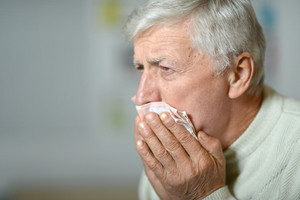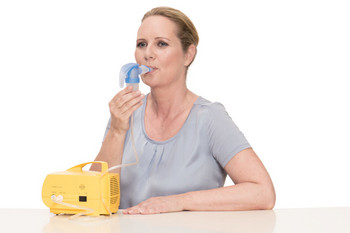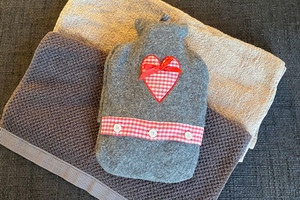Wednesday, 20. September 2023
Does your throat or chest hurt when you cough? We asked the respiratory physiotherapist Marlies Ziegler what you can do if you have a painful cough. Use these 10 tips to stop your cough being (quite so) painful.

There are many different kinds of painful cough. The pain when you cough can be in your throat or your chest. Sometimes it can also be in your throat and chest at the same time. The cough can be dry and barking. Or it can be accompanied by yellow or green phlegm.
“What you can do against the pain caused by coughing depends on where and why it is painful” explains the respiratory physiotherapist Marlies Ziegler. In her practise she treats people with acute and chronic lung diseases and also gives her patients tips on dealing with a painful cough.
No matter if the pain is in your throat or your chest and no matter whether or not you cough up phlegm: you should always follow these three tips.
If you have a painful cough that persists for several days and that is not showing signs of abating, please see your doctor. This applies especially if the pain is in your chest. It could mean that you have a lung infection, inflammation of the pleura or a broken rib.
Avoid the pain by coughing as little as possible or controlling your cough. It does take some self-control. But it is possible to stop a coughing fit and the urge to cough.
Drinking plenty, ideally herbal teas for a cough, such as ginger, sage or thyme infusions (not chamomile) with carefully processed honey calms the throat and indirectly helps keep the mucous membranes in the airways moist via the bloodstream. This is important because dry mucosal membranes are easily irritated. And this irritation makes us cough.


If your throat hurts when you cough you can do the following:
... which calm the membranes and pain receptors in the throat.
Put something warm around your neck like a scarf, a cloth or a heated wheat cushion. The heat has a calming effect and stimulates blood circulation.
Moisten your throat with inhalation of saline solution. But watch out: Inhaling hot steam can cause scolding which is why steam inhalation is only very rarely recommended in children. A safer, more pleasant and more targeted inhalation therapy is with a nebuliser that generates extra large droplets such as the PARI LC SPRINT XLent Nebuliser.


If your chest hurts when you cough you can ease the pain as follows:
Moist heat always has a relaxing effect on the bronchial muscles, stimulates circulation and helps to release the mucus in the lungs. Wet a towel with water that is as warm or hot as you personally like. Wring out the towel. Wrap it tightly around your chest tucked in under your arms. Ideally get someone else to help you. Wrap a dry towel around the damp towel and lie down under a blanket in bed or on the sofa. Once the towel has cooled down, remove it and, if necessary, prepare the next chest wrap.

If a warm chest wrap is too much hassle, you can achieve a similar relaxing effect using a damp towel with a water bottle. Place a damp, lukewarm towel on your chest and a hot water bottle on top of it. Again, place a dry towel over the top so the blanket you are snuggled under does not end up damp.
NB for moist heat: Do not use warm wraps for fever or acute inflammation.
Just like heat, easy stretching exercises help open and relax the bronchial muscles. They also loosen the secretions in the bronchial tubes and so make it easier to cough up the mucus. Try out the exercises to see which help you. A selection of mobilisation exercises is available here.

Massages are ideal for loosening tense muscles. If you do not have anyone who can massage your back and neck, you can give yourself a massage as follows:
Inhalation of saline solution such as PARI NaCl 0.9% inhalation solution moistens and protects the airways. This calms irritated bronchial tubes. Secretions liquify, making them easier to cough up. To do this, you should use a nebuliser that generates droplets that can reach the lungs, such as the PARI BOY or the PARI COMPACT2.
This article was written in cooperation with Marlies Ziegler. She works as a physiotherapist in private practice in Munich. She specialises in respiratory therapy. She has been treating patients with chronic obstructive and restrictive airway diseases such as asthma, COPD, cystic fibrosiss (CF) and primary ciliary dyskinesia (PCD), for more than 20 years.
Note: The information in this blog post is not a treatment recommendation. The needs of patients vary greatly from person to person. The treatment approaches presented should be viewed only as examples. PARI recommends that patients always consult with their physician or physiotherapist first.
An article written by the PARI BLOG editorial team.
© 2024 PARI GmbH Spezialisten für effektive Inhalation